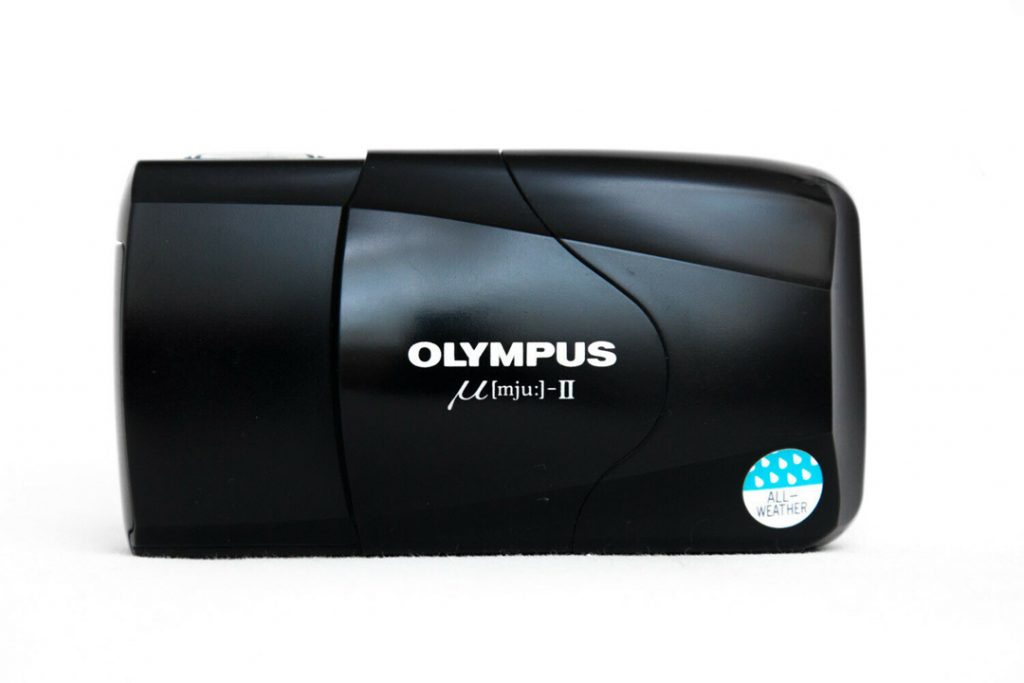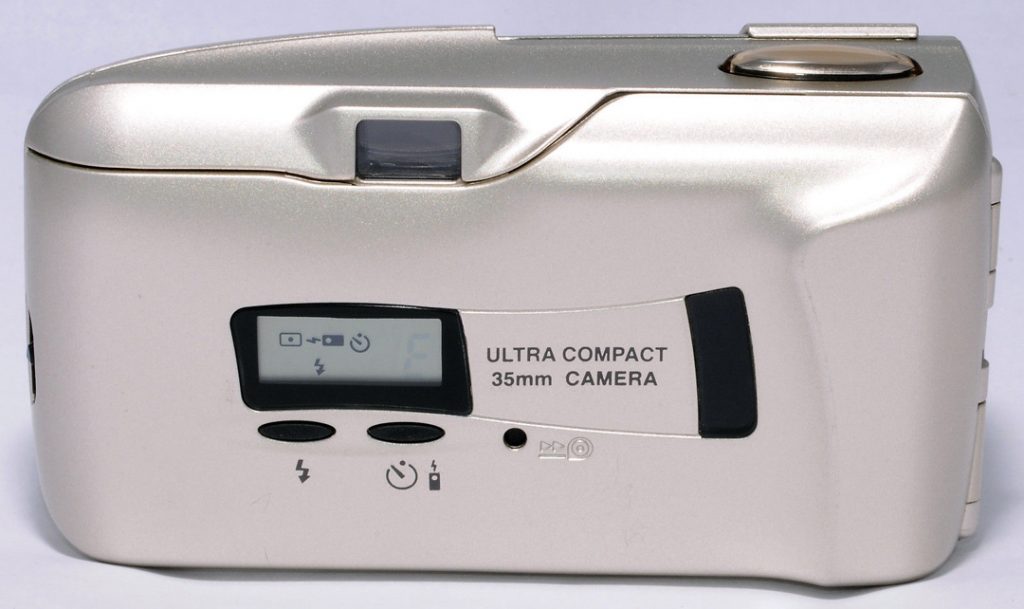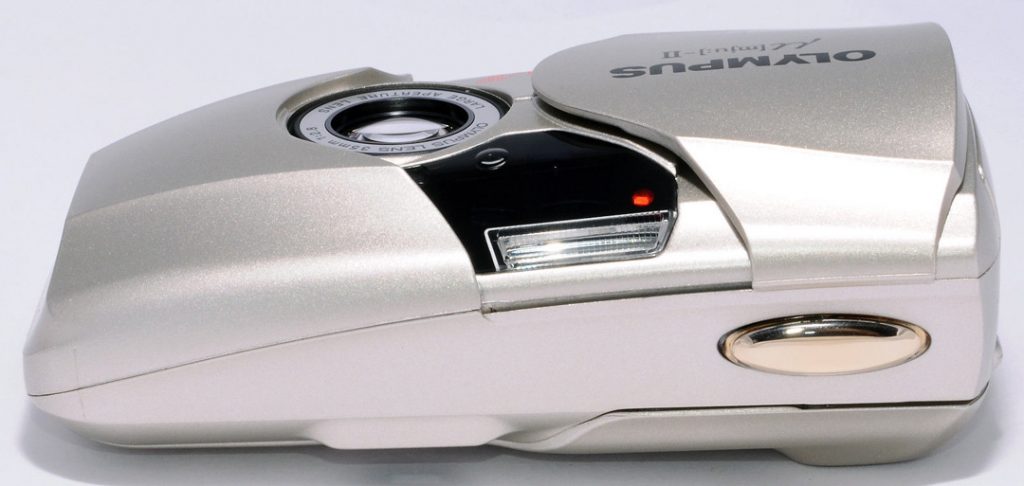The Olympus Stylus Epic Mju II

or simply Olympus Mju II, may be more popular than some think. However, prices are really the barometer of “popularity”. And as far as mostly plastic film point and shoots go, the Yashica T4 is still king of the hill. That said, when it comes to features, portability, image sharpness and contrast go, the Olympus is definitely sharing the stage. First, the build quality is quite good,….certainly no Contax T2/T3 or Leica Mini. But lens wise, every bit as good as the Leica Mini. Hey, Helmut Newton liked them! Why so many names? (Stylus…Epic…Infinity…Mju, blah, blah, blah…) Different markets? The Japanese bent for “pissing off Americans and Europeans”? Hell, I don’t know. Just keep away from the zoom models. As far as the Mju I vs the Mju II goes,…the “clamshell” appearance is slightly different. And the Mju II is obviously better at focusing and in low light conditions. Other than that, I see no difference. If there is, I’m sure someone will tell us in the comments below.
Details, Details
I think the thing that “scares” your typical overly technical photographer about the Olympus is it’s simplicity. But this “All Weather” wonder with the very fast 35mm f/ 2.8 lens has everything you need. Especially in a fast moving “street” (or party), environment. It’s date stamp, (some models), along with a few flash modes, makes it quite an adaptable camera for most situations. Plus, the whole clamshell design is unique and ingenious. Extremely easy to operate in the field. Like a gunslinger.
But let’s get to the nitty gritty. The 35mm f/2.8 lens on the Olympus Stylus Epic Mju II. It focuses from 1.2ft to infinity. And sharp, sharp, sharp! AF is as fast as any of the others in this type of camera. And, yes, it does allow you to half press the shutter, recompose and snap. Certainly no AFS SLR lens, but nonetheless as fast as any P&S camera, no matter the brand. The flash is really good. While I prefer the Contax T2 and Yashica T4 slight overpowering flash,… fact is, the Olympus is the most accurate. Never too bright. It does “automatically” turn on in default mode. (like most P&S’s) But that can sometimes be annoying if you’re a dedicated natural light shooter.
What Matters,…The Image
The viewfinder is no Nikon D850 or Canon 5D as far as displayed info goes. It’s pretty much the whole picture frame with close-up focusing frame lines. (for parallax) Plus a green dot indicating it’s in focus. The red dot tells you flash is required,…or on. (under exposure indicator) But while this camera does “draw” differently than the Yashica and Contax, it is just as sharp. And fast at f/2.8. But the one thing people rarely talk about is handling prowess. You can literally have a broken hand and still open this camera and shoot with one hand! Try to do that with an F3. (I do love the Nikon F3,…it’s just an example) While you can’t quite fit it in your ‘skinny jeans’, about any other pocket will do. I’m actually surprised how small and light it is, considering it does need room for a roll of 35mm film. And the images are without reproach. (try Pinterest for examples)
Helmut?
This is a very minimal camera. It gives you what you need,…and not an ounce more. The build quality? Well, it ain’t no titanium wonder. And it takes DX coded film, and does NOT allow you to change the ISO. Next, it is an “electronic” camera. But so are the the other well regarded point & shoots. And not worth fixing. (if you could even find someone to do so) Plus,….the secret’s out. Hence, prices are rising and rising. But, bang for the buck is still there. Especially when put up against the competition. At least Helmut thought so. 😎
MANUAL






